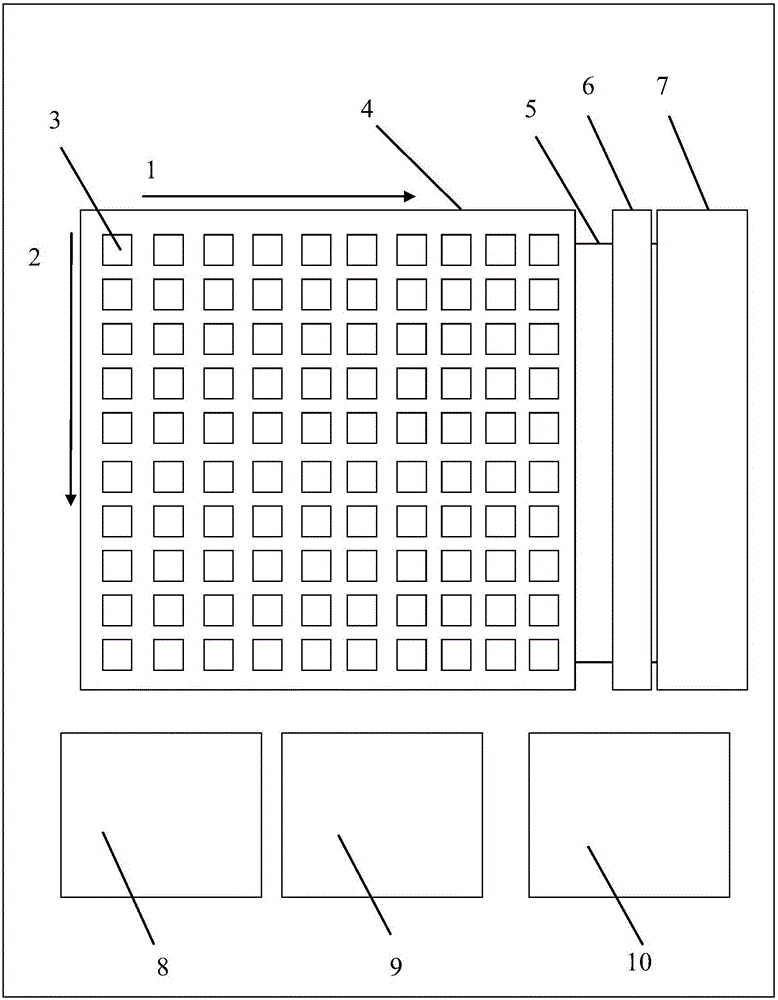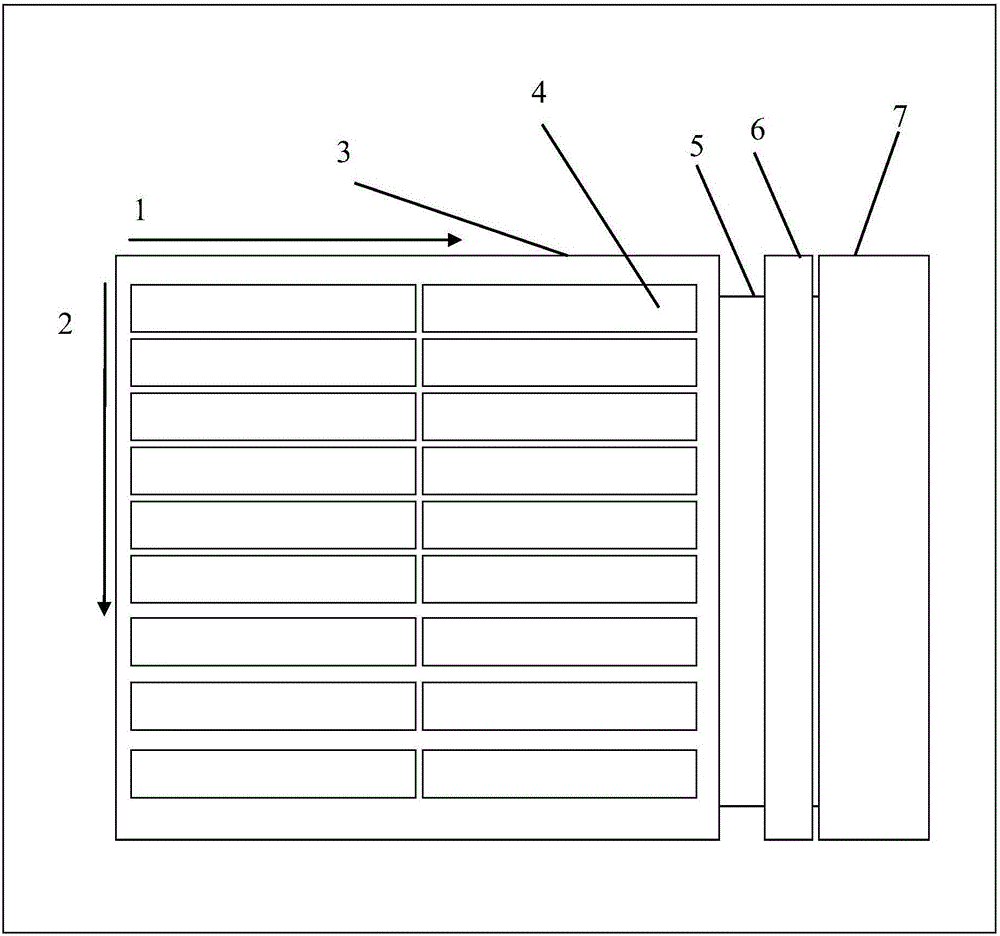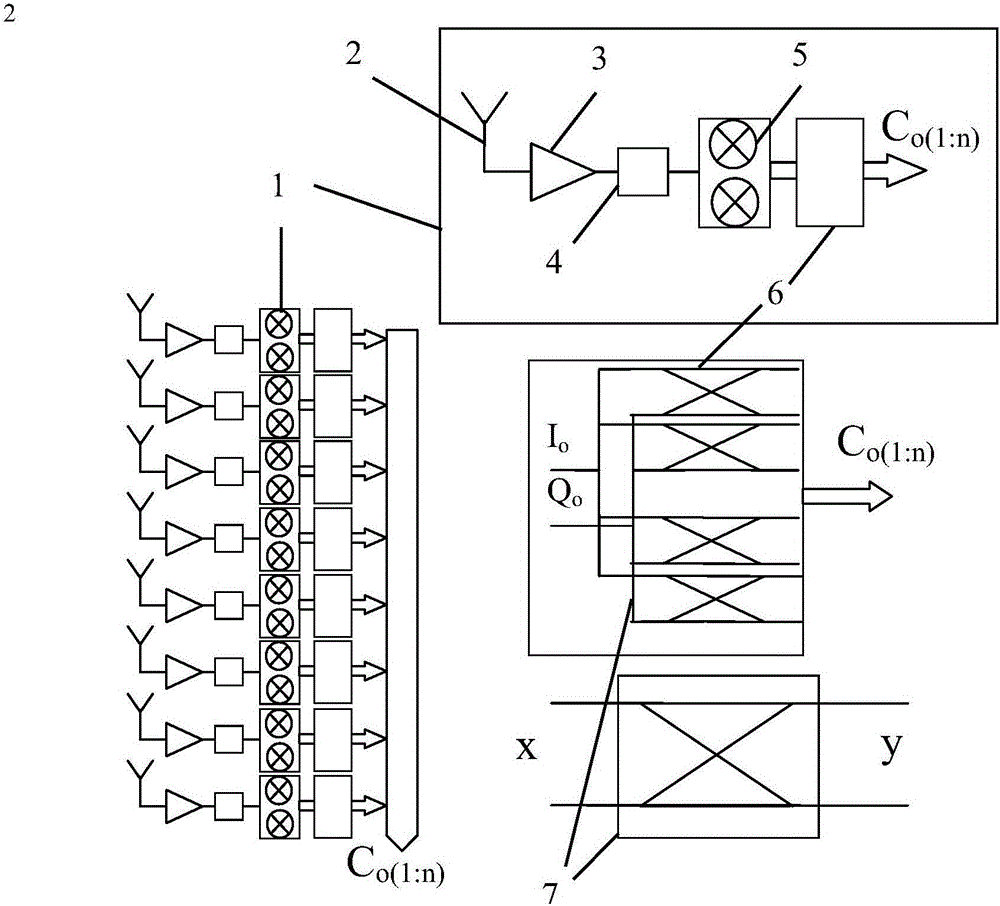Analog and digital hybrid two-dimensional phased array radio frequency multiple-beam intelligent imaging system
An analog-to-digital hybrid and imaging system technology, applied in radio wave measurement systems, using re-radiation, radio wave reflection/re-radiation, etc., can solve problems such as inability to cover the body, manual monitoring visual fatigue, and invasion of privacy
- Summary
- Abstract
- Description
- Claims
- Application Information
AI Technical Summary
Problems solved by technology
Method used
Image
Examples
Embodiment Construction
[0022] The block diagram of the analog-digital hybrid two-dimensional array radio frequency multi-beam intelligent imaging system is shown in figure 1 . The analog-digital hybrid two-dimensional array radio frequency multi-beam intelligent imaging system includes an antenna array and a corresponding receiving channel array. The receiving channel array has NxM receiving units, that is, there are N groups of units in the direction of the first dimension, and there are M groups of units in the direction of the second dimension, where the groups can be rows or columns. In other words, arrays can be placed horizontally or vertically.
[0023] Each receiving unit in the receiving channel array includes: antenna input circuit, such as input balun or RF filter; RF receiving low-noise amplifier is used to amplify RF signal; one-stage or two-stage down converter, down-converting input RF signal Frequency conversion to baseband signal; radio frequency bandpass filter or intermediate fr...
PUM
 Login to View More
Login to View More Abstract
Description
Claims
Application Information
 Login to View More
Login to View More - R&D
- Intellectual Property
- Life Sciences
- Materials
- Tech Scout
- Unparalleled Data Quality
- Higher Quality Content
- 60% Fewer Hallucinations
Browse by: Latest US Patents, China's latest patents, Technical Efficacy Thesaurus, Application Domain, Technology Topic, Popular Technical Reports.
© 2025 PatSnap. All rights reserved.Legal|Privacy policy|Modern Slavery Act Transparency Statement|Sitemap|About US| Contact US: help@patsnap.com



